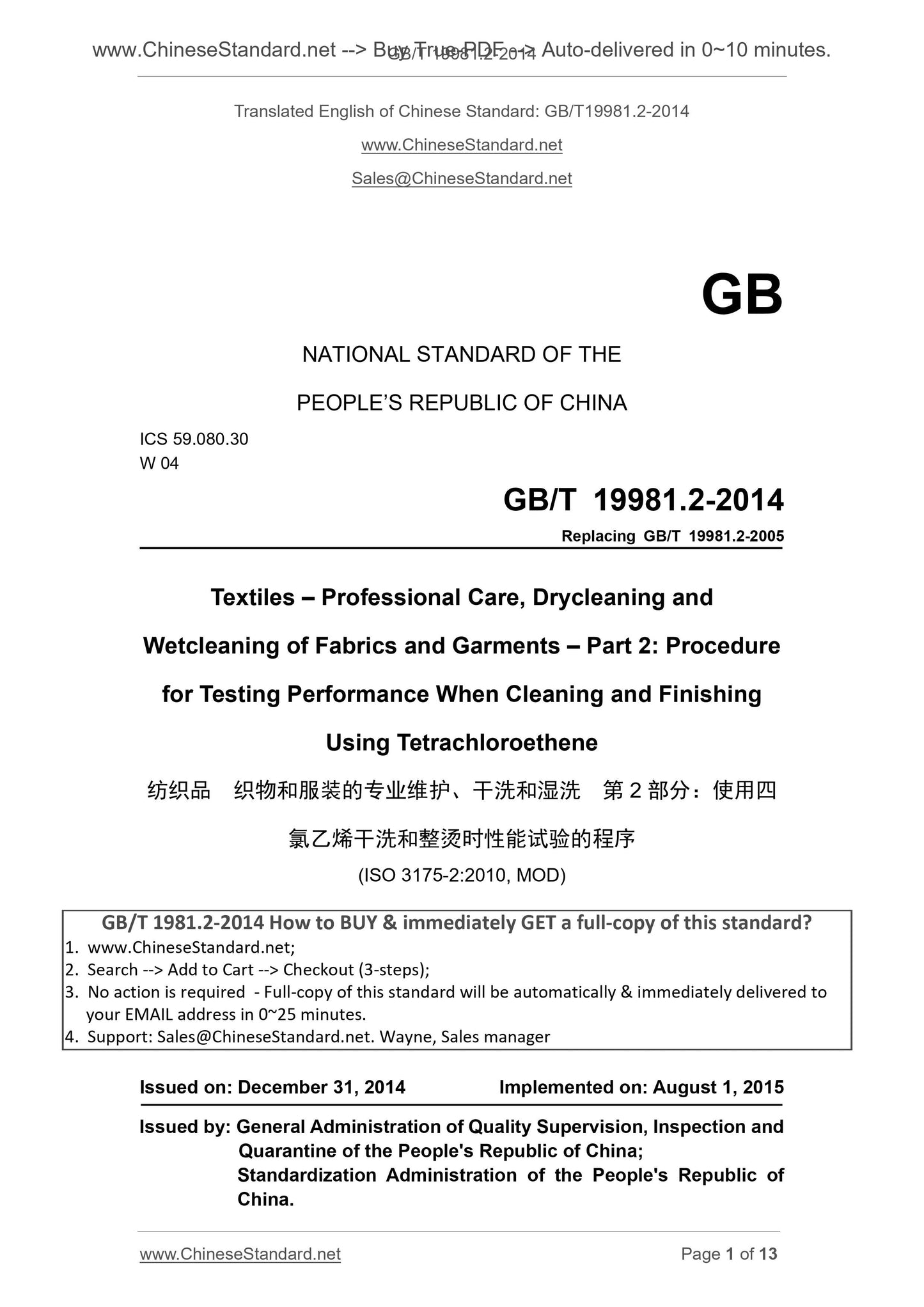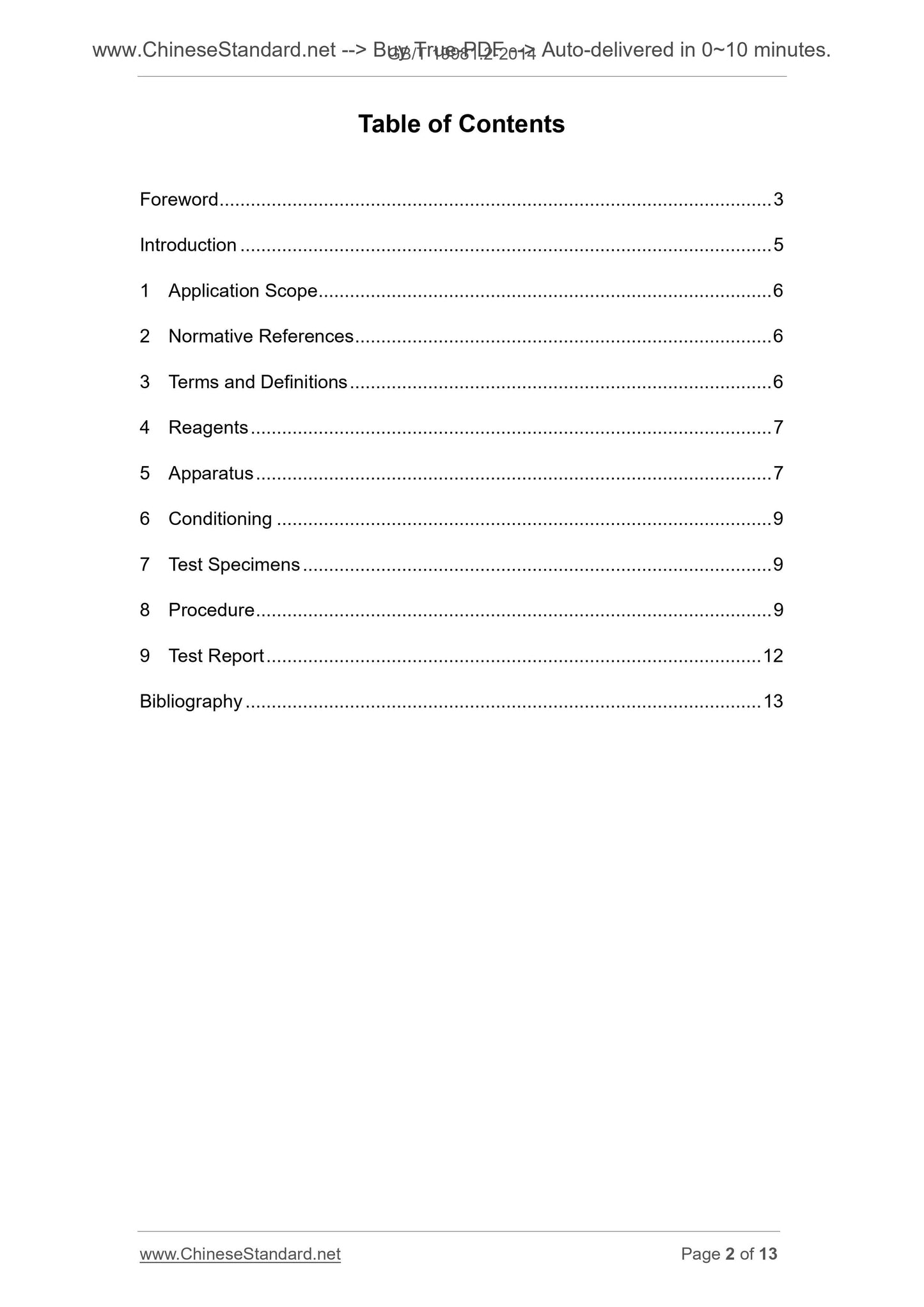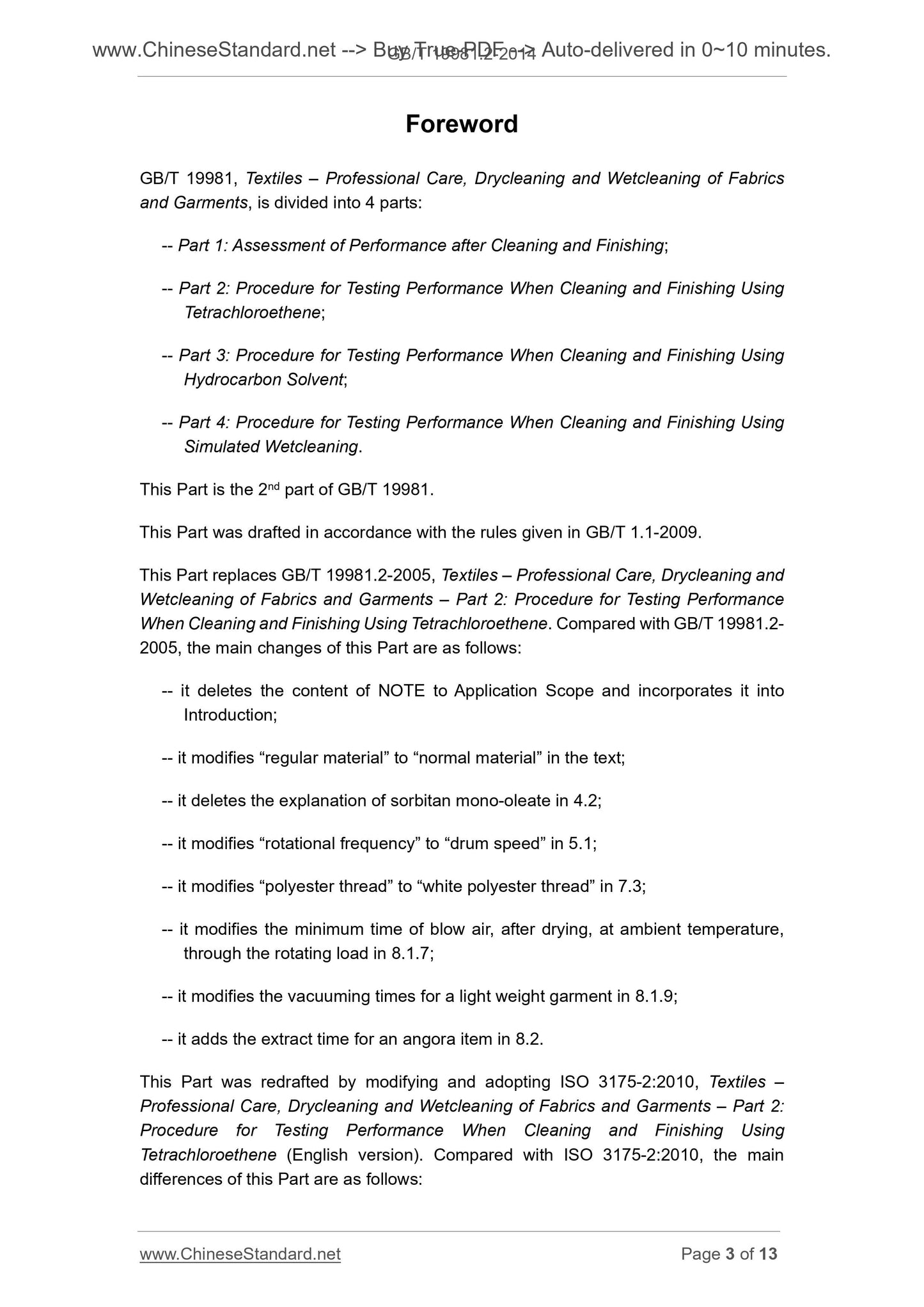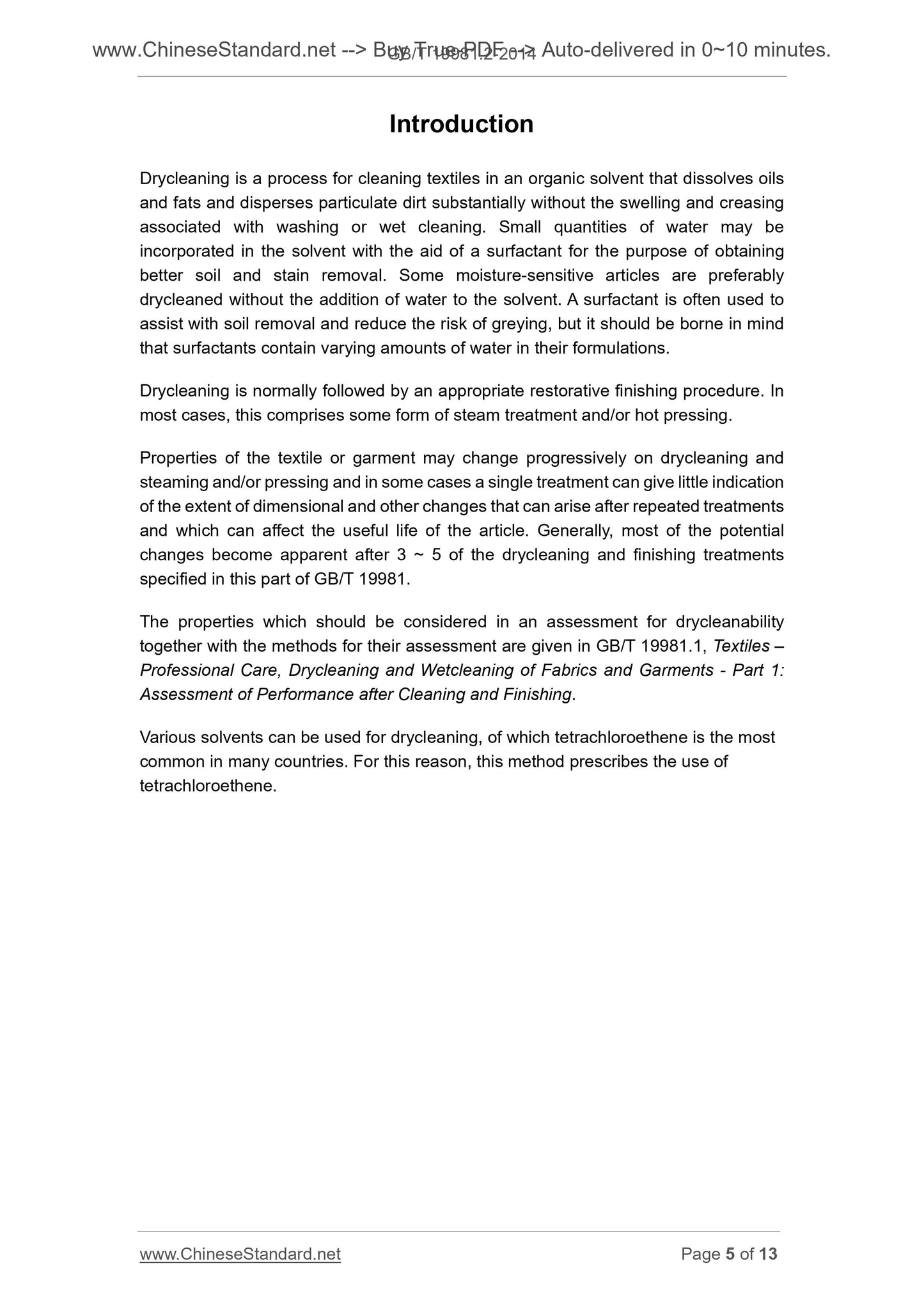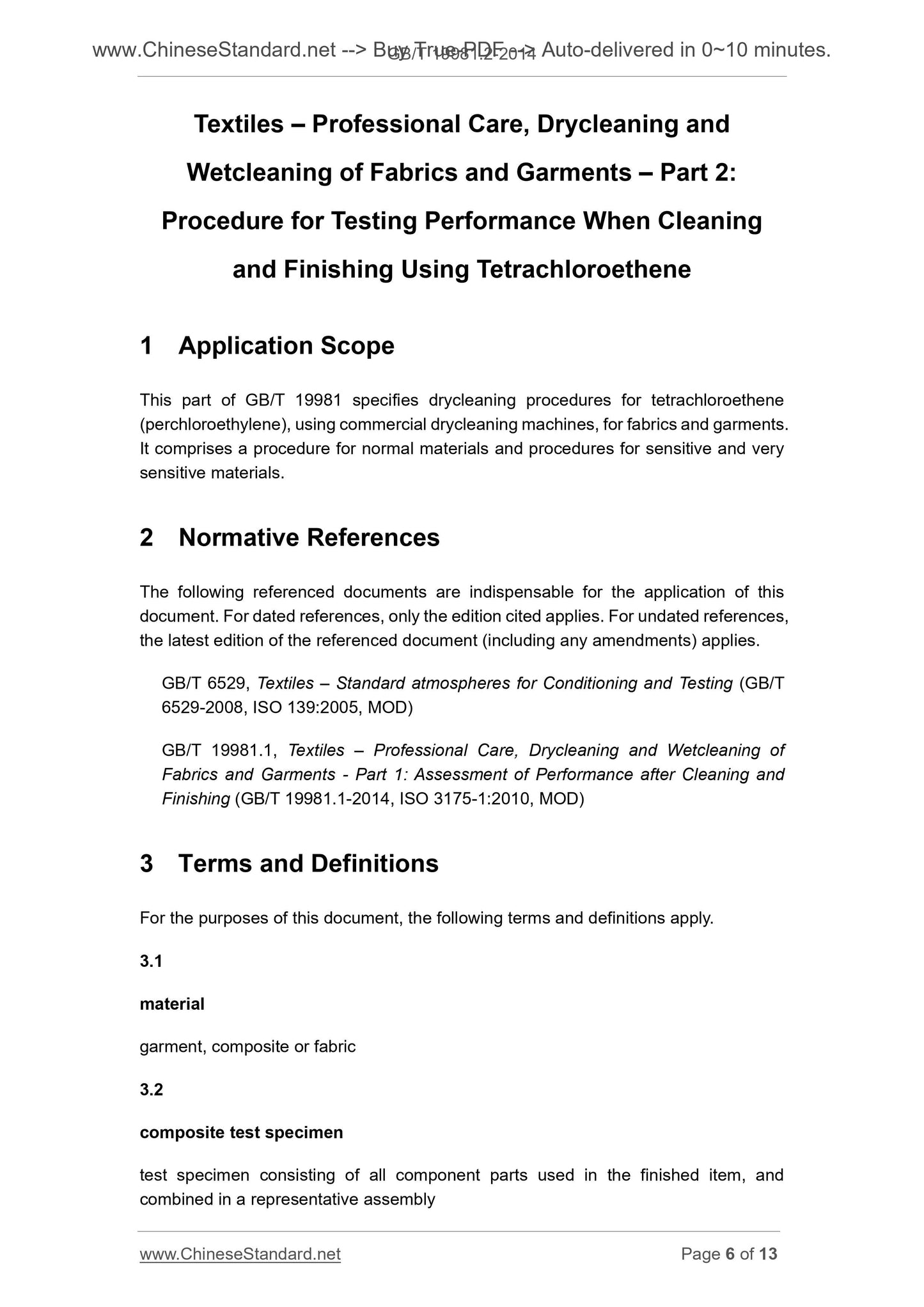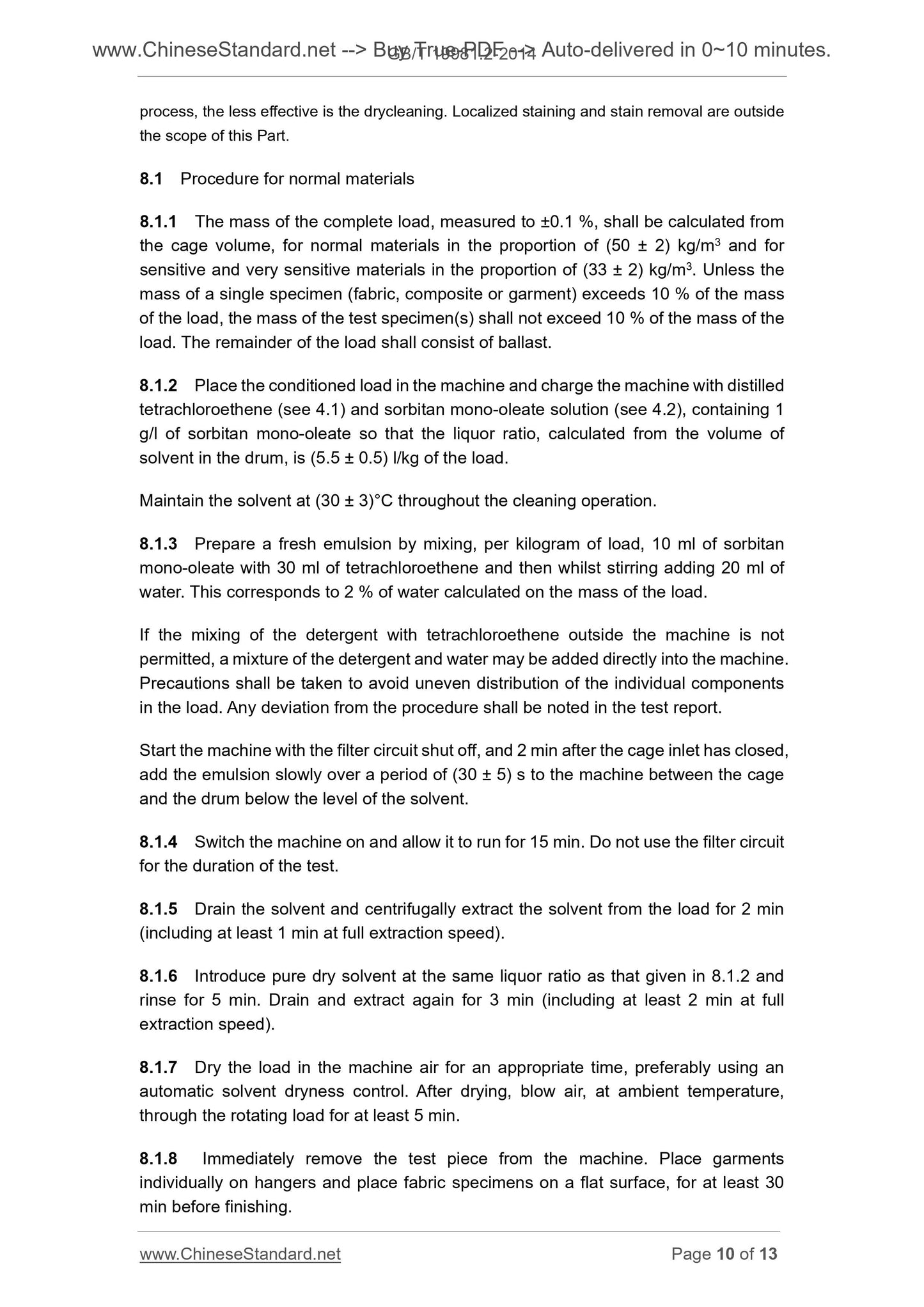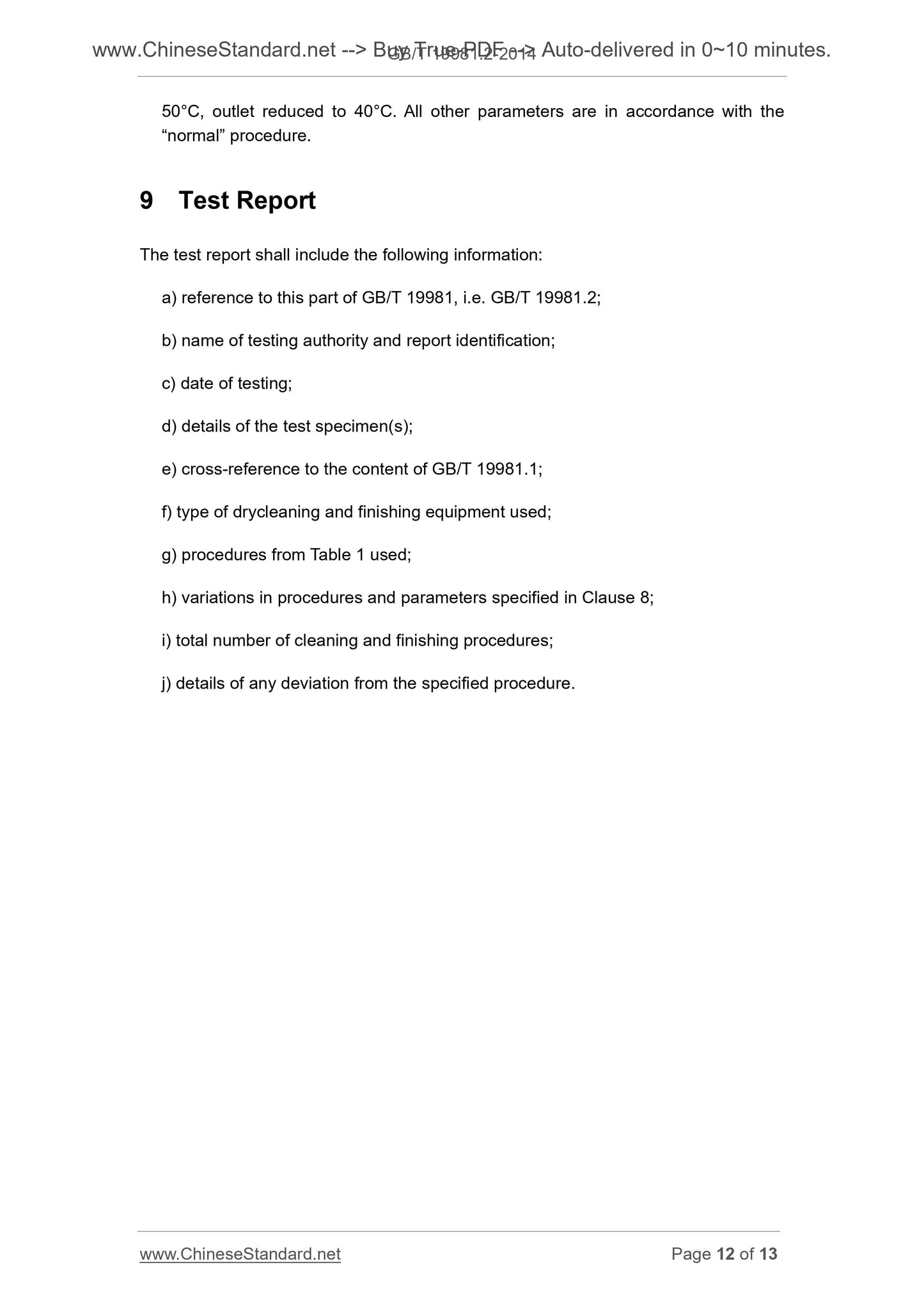1
/
of
7
www.ChineseStandard.us -- Field Test Asia Pte. Ltd.
GB/T 19981.2-2014 English PDF (GB/T19981.2-2014)
GB/T 19981.2-2014 English PDF (GB/T19981.2-2014)
Regular price
$85.00
Regular price
Sale price
$85.00
Unit price
/
per
Shipping calculated at checkout.
Couldn't load pickup availability
GB/T 19981.2-2014: Textiles -- Professional care, dry cleaning and wet cleaning of fabrics and garments -- Part 2: Procedure for testing performance when dry cleaning and finishing using tetrachloroethene
Delivery: 9 seconds. Download (and Email) true-PDF + Invoice.Get Quotation: Click GB/T 19981.2-2014 (Self-service in 1-minute)
Newer / historical versions: GB/T 19981.2-2014
Preview True-PDF
Scope
This part of GB/T 19981 specifies drycleaning procedures for tetrachloroethene(perchloroethylene), using commercial drycleaning machines, for fabrics and garments.
It comprises a procedure for normal materials and procedures for sensitive and very
sensitive materials.
Basic Data
| Standard ID | GB/T 19981.2-2014 (GB/T19981.2-2014) |
| Description (Translated English) | Textiles -- Professional care, dry cleaning and wet cleaning of fabrics and garments -- Part 2: Procedure for testing performance when dry cleaning and finishing using tetrachloroethene |
| Sector / Industry | National Standard (Recommended) |
| Classification of Chinese Standard | W04 |
| Classification of International Standard | 59.080.30 |
| Word Count Estimation | 10,151 |
| Date of Issue | 12/31/2014 |
| Date of Implementation | 8/1/2015 |
| Older Standard (superseded by this standard) | GB/T 19981.2-2005 |
| Quoted Standard | GB/T 6529; GB/T 19981.1 |
| Adopted Standard | ISO 3175-2-2010, MOD |
| Regulation (derived from) | National Standards Bulletin 2014 No. 33 |
| Issuing agency(ies) | General Administration of Quality Supervision, Inspection and Quarantine of the People's Republic of China, Standardization Administration of the People's Republic of China |
| Summary | This Standard specifies the use of commercial cleaning machines and tetrachlorethylene (perchlorethylene) for dry cleaning fabrics and clothing programs. Including ordinary dry-cleaning program material, sensitive material and Temin material dry cleaning |
Share
